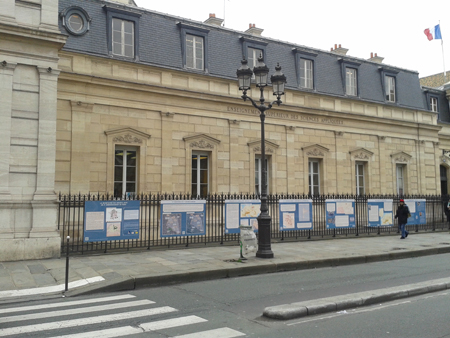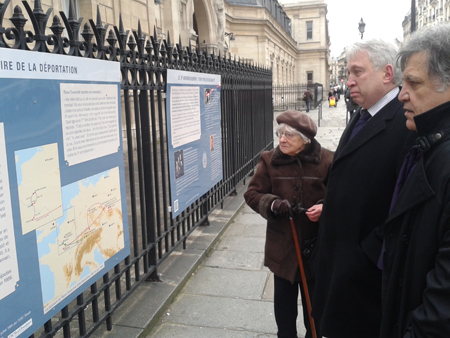French Deportation Mapping Project Features Testimony

 For help researching the deportation of Jews in France during the Holocaust, French scholars turned to the USC Shoah Foundation and its French liaison Emmanuel Debono.
For help researching the deportation of Jews in France during the Holocaust, French scholars turned to the USC Shoah Foundation and its French liaison Emmanuel Debono.
For their research project Territories and Trajectories of the Jews Deported from France (TETRADE), researchers Jean-Luc Pinol, Serge Klarsfeld and Gerard Foliot are compiling lists of the names and addresses of all of the 76,000 Jews deported from France. Each name and address is then pinpointed onto interactive maps on the TETRADE website, which can be searched by neighborhood, name or specific address.
Currently, visitors can explore the map of France and zoom on the big cities including Paris, Marseille, Lyon, Bordeaux or Nice, where children are located with precise addresses.
In addition, TETRADE includes an exhibit of panels hung on the gates of the Conservatoire national des Arts et Métiers (CNAM) in Paris from January 27 to March 3. The panels feature biographical information about Jewish children arrested in Paris’s third district, photographs and maps.
As USC Shoah Foundation’s liaison in France, Debono coordinates its teacher education programs and other outreach in the country. He helped locate testimonies in USC Shoah Foundation’s Visual History Archive of children who survived deportation from Paris’s third district during the Holocaust, so clips from the testimonies could be linked to their respective points on the map. Out of 577 children in the district, Debono found two in the Visual History Archive that discuss surviving deportation: Samuel Kernbeiser (who actually tells the story of how his younger brother survived) and Raoul Swiecznik. Clips from each testimony are featured on the TETRADE website.
“The fact that we have only one direct testimony shows the violence of the persecution in that area. Of the children over 15 arrested in 1942, most of them had few chances to survive,” Debono said, as most were immediately gassed upon their arrivals in Auschwitz.
The CNAM exhibit and interactive maps are just the beginning of the TETRADE project. Debono and the other scholars will continue their research and hope to ultimately develop educational materials and other digital projects.
Below: Raoul Swiecznik’s son Michel, middle, with his aunt and researcher Jean-Luc Pinol at the TETRADE exhibit on the gates of CNAM)

Like this article? Get our e-newsletter.
Be the first to learn about new articles and personal stories like the one you've just read.